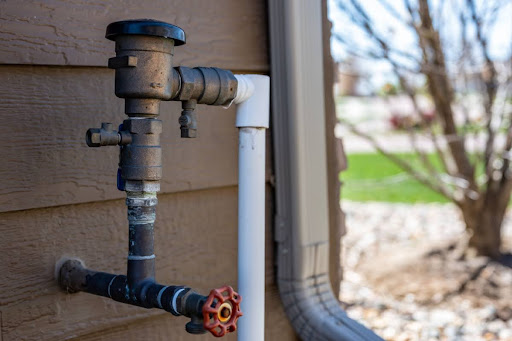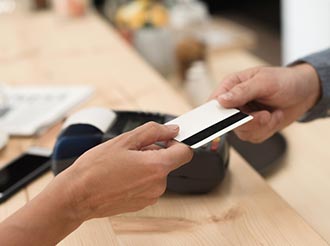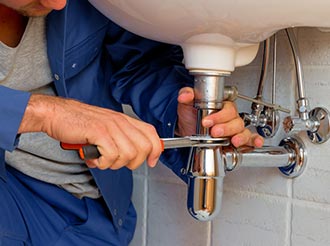
Your home’s plumbing works like a well-organized highway, with clean water flowing in and wastewater heading out. But when pressure shifts unexpectedly, that “traffic” can reverse, sending contaminants into the water you use to drink, cook, and bathe. This is called backflow, and preventing it is one of the smartest things you can do to protect your home.
S and J Plumbing is here to explain everything you need to know about avoiding backflow. As an experienced plumbing team in Arlington Heights, IL, we've seen and resolved our fair share of backflow disasters. That's why we're sharing our insider knowledge, so your family can enjoy clean, pure water without worry. Give us a call with any questions or to learn more about our sewer line services, plumbing services, and all of our other offerings.
What Is Backflow?
Backflow happens when water flows in the opposite direction than intended in your pipes. Normally, water should travel one way through your piping — from the main water supply into your home. However, changes in pressure can cause water to reverse course.
This might not seem like a big deal until you consider what that water might contain. Your drinking water could potentially mix with water that has passed through your dishwasher, washing machine, or worse — your toilet or sanitary sewer system.
Backflow typically occurs in two main ways:
- Back Pressure: This happens when downstream pressure exceeds supply pressure. You might experience back pressure if you have a booster pump on your property or if your home has a tall storage tank. The pressure created pushes water backward through the system, sometimes forcing contaminants into your clean water supply.
- Back Siphonage: This occurs when there's a significant drop in water pressure, like during a water main break or when firefighters use large amounts of water to fight fires. The resulting vacuum can pull potentially contaminated water back into your clean water pipes.
Either scenario creates what we plumbers call a "cross-connection," any point where drinking water connects to potential sources of contamination.
How Backflow Affects Your Health & Your Home's Water Supply
Let's get real about what backflow means for your family's health. When backflow occurs, you could unknowingly consume harmful microorganisms that cause gastrointestinal illnesses, respiratory infections, or worse. Even a small leak in a sanitary sewer or drain system increases exposure risks.
Backflow also damages appliances and plumbing fixtures. Sediment or chemicals corrode pipes, clog water filters, and degrade piping and plumbing fittings. Left unchecked, this can reduce the lifespan of your home's plumbing and lead to extensive repairs.
Backflow Prevention Devices and Methods
Good news! Modern plumbing includes several effective methods to stop backflow before it happens. Each of these backflow prevention devices serves specific purposes, and the right choice depends on your home's plumbing configuration and local regulations.
Air Gap: The simplest form of backflow prevention remains the air gap, which creates a physical separation between a water outlet and any potential contamination source. You see this every day in your sink — the faucet sits well above the highest possible water level. If the sink backs up, the water can't reach the faucet.
Check Valve: A check valve allows water to flow in one direction but closes automatically to prevent flow in the opposite direction. Simple and effective, these valves work great for many household applications. Taking it a step further, a dual check valve offers an extra layer of protection with two check valves working together, making it ideal for residential water pipes.
Atmospheric & Pressure Vacuum Breakers: The atmospheric vacuum breaker prevents back siphonage by allowing air to enter the line when the pressure drops. You'll often find these installed on irrigation systems or hose bibs. Similar to this, a pressure vacuum breaker works under constant pressure, helping protect a water supply connected to irrigation systems.
Hose Bibs & RPZ Valves: For outdoor faucets, hose bib vacuum breakers attach directly, preventing water from your garden hose from flowing back into your home's drinking water. One of the most comprehensive options available, RPZ valves contain multiple check valves and a relief valve that can discharge water if backflow begins to occur.
Legal Requirements and Plumbing Codes
Most municipalities require some form of backflow prevention, especially for homes with fire sprinkler systems, irrigation systems, swimming pools, water features, or wells and auxiliary water systems.
Local plumbing codes typically specify what type of backflow prevention device you need based on the level of hazard. High-hazard situations like connections to chemical systems require more sophisticated protection than low-hazard scenarios.
Many areas also mandate regular backflow testing by certified professionals. These tests verify that your backflow prevention devices work properly. Failing to comply with testing requirements can result in fines or even water service disconnection.
The Role of Professional Plumbing Inspections
Professional plumbing inspections play a crucial role in preventing backflow and contamination in your home's water supply. These inspections cover your entire plumbing system, including connections to appliances like your washing machine.
During an inspection, a plumber checks your water heater’s storage tank for potential issues. They make sure your tank is properly sealed and maintained to prevent contamination from external sources. Inspectors also examine the connections between your home's plumbing and public water lines. This helps identify any weak points where contamination could occur, especially in areas connected to your washing machine or other appliances that use water.
Regular professional inspections can catch problems early, saving you from costly repairs and potential health risks down the line. By having your piping and plumbing fittings checked regularly, you're taking an important step in protecting your home's water supply from backflow and contamination.
Steps Homeowners Can Take to Prevent Backflow
While professional help matters, you can take several steps to reduce backflow risks:
- Know your plumbing system. Understand where main shutoff valves are located and how your backflow devices work.
- Install hose bib vacuum breakers. These inexpensive devices prevent water from your garden hose from flowing back into your home's water supply.
- Mind the gap. Maintain proper air gaps around your home — never leave hoses submerged in buckets, pools, or sinks.
- Consider water filters. While filters won't prevent backflow, they can provide an additional layer of protection for your drinking water.
- Watch for pressure changes. If you notice sudden drops in water pressure or changes in water quality, color, or taste, contact a plumber immediately for leak detection and assessment.
- Maintain your sump pump. A properly working sump pump helps manage water during flooding, reducing risk to your plumbing system.
- Schedule regular backflow testing. Annual testing catches problems before they become hazards.
- Check your expansion tank. This tank absorbs excess pressure in your water heater system, preventing dangerous pressure buildup that could cause back pressure.
- Inspect visible pipes regularly. Look for signs of corrosion, leaks, or damage, particularly around compression fittings, control valves, and other connection points.
- Understand your irrigation system. If you have sprinklers, make sure they include appropriate backflow prevention for your climate and system type.
Call & Get Help With Backflow Prevention From S and J Plumbing!
Don't wait for a backflow problem to occur. Contact S and J Plumbing today for a thorough inspection of your plumbing system. We'll help you protect your home's water supply and give you peace of mind about your family's health and safety.




